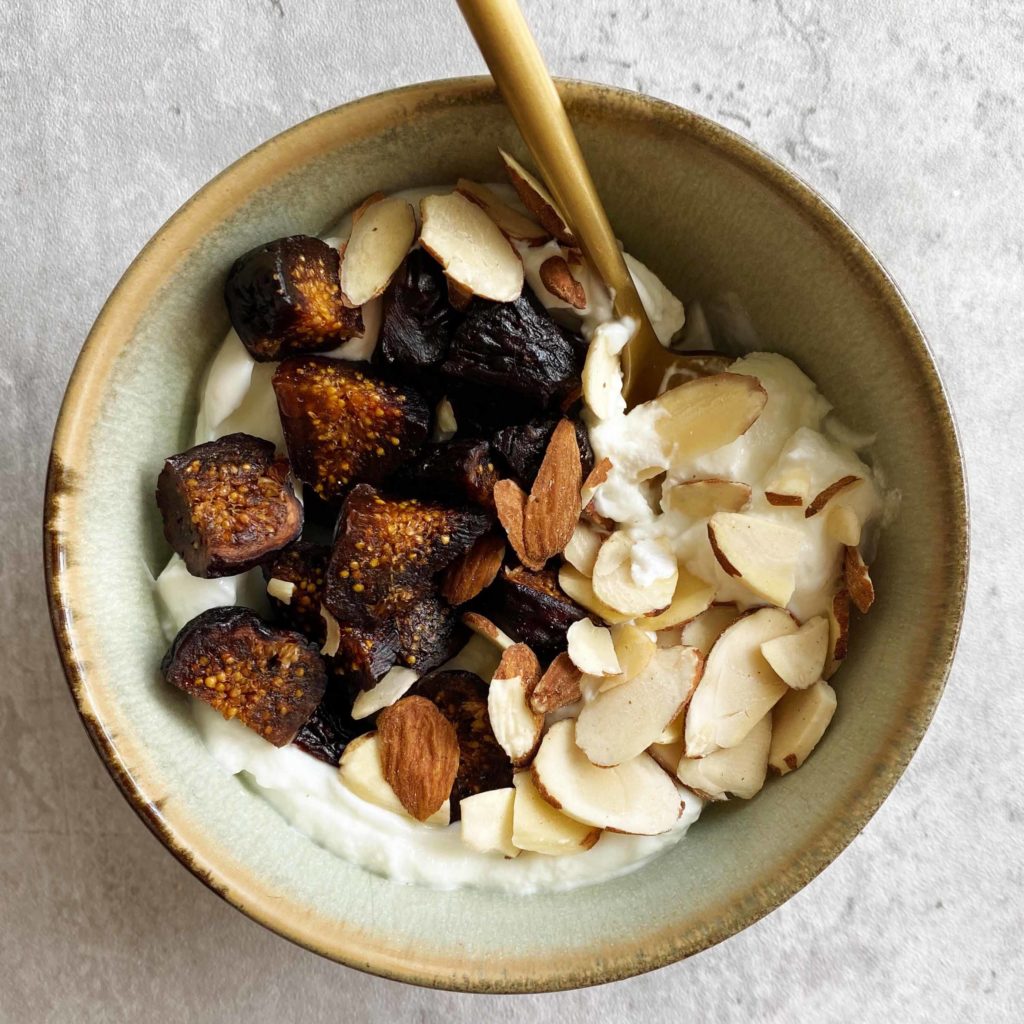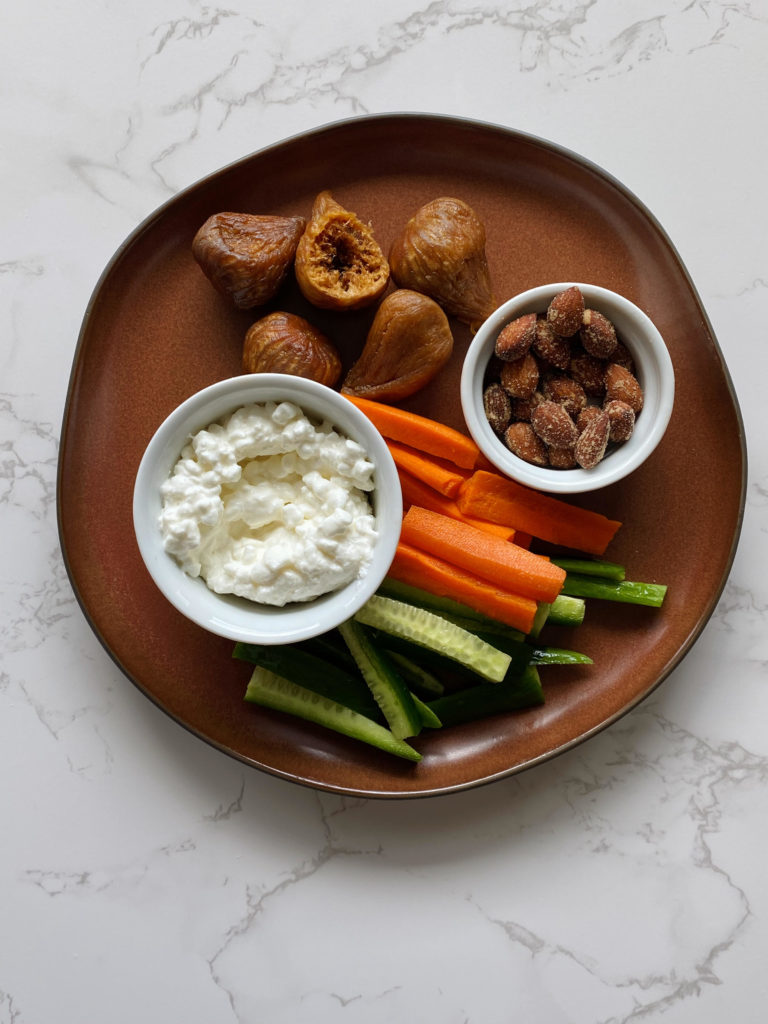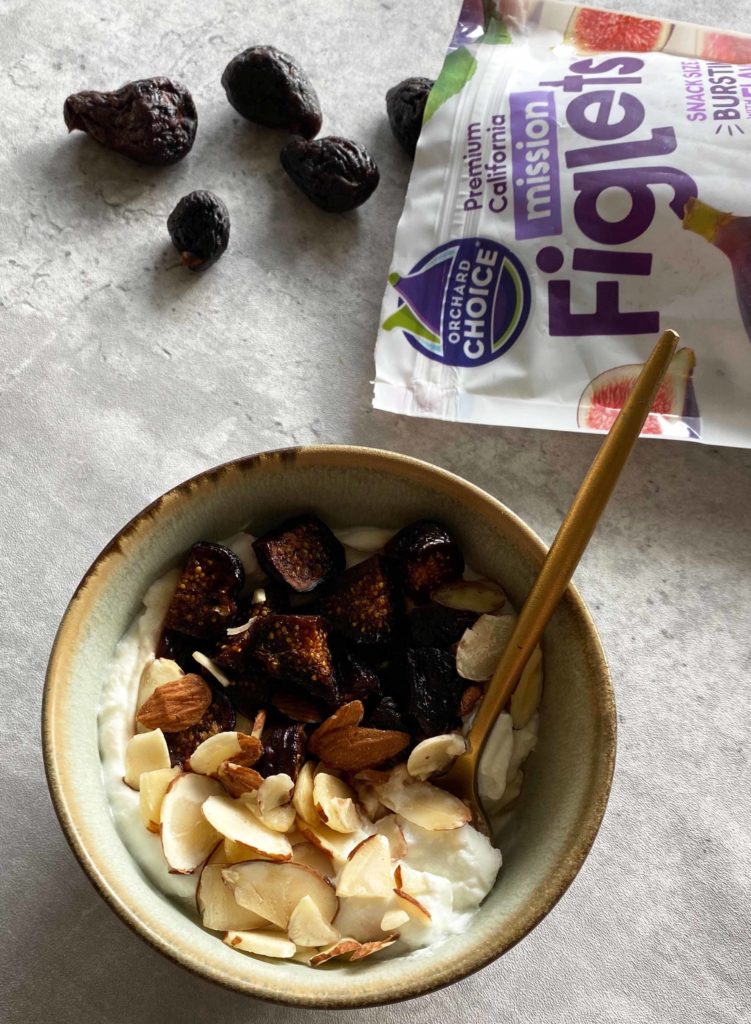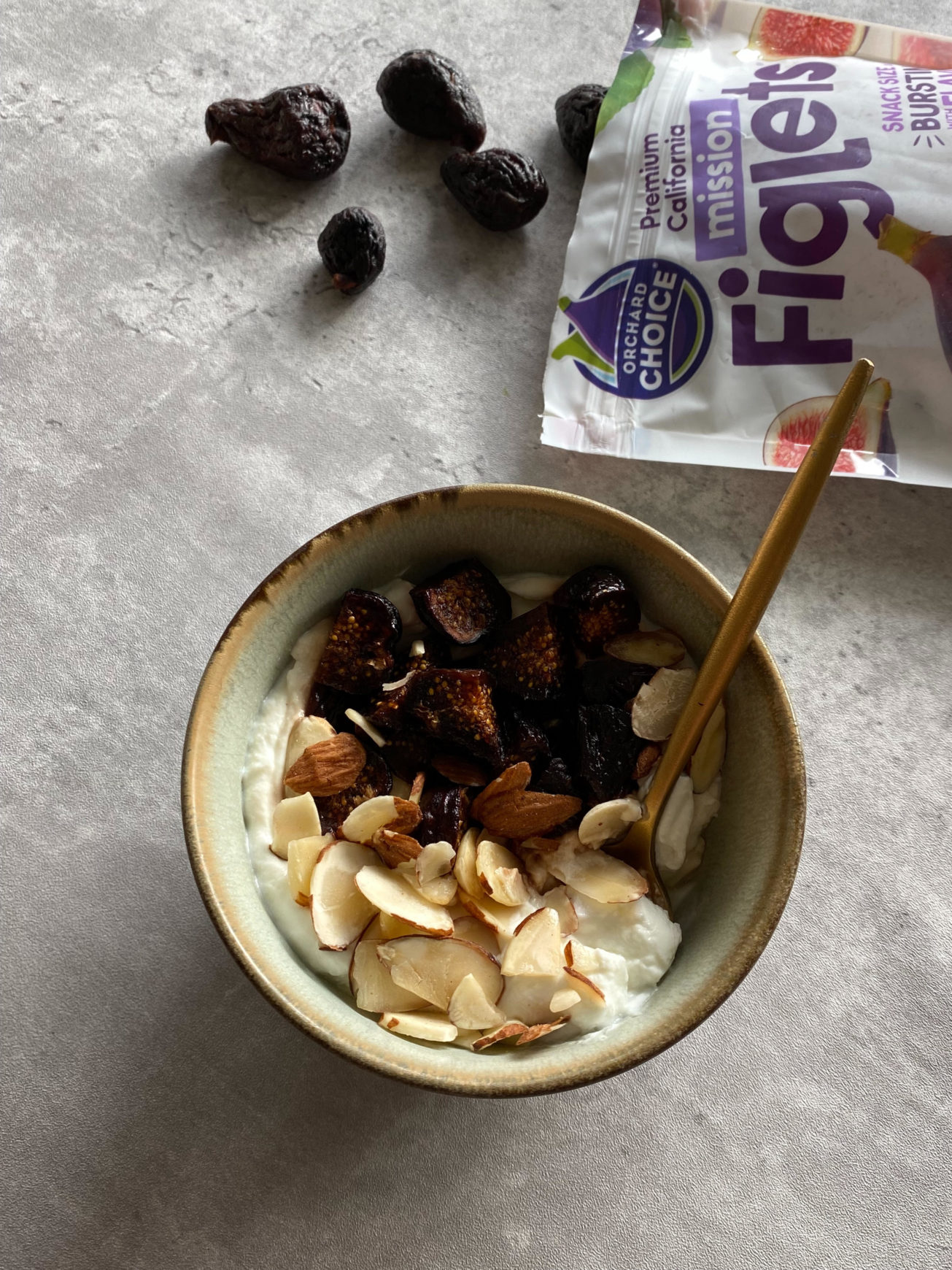It’s no secret that fruit, both fresh and frozen, can help provide key nutrients like vitamins, minerals, and fiber. Dried figs are the perfect snack to incorporate into your diet for their nutritional benefits, but especially for their sweet taste. Learn more about figs and blood sugar, and the glycemic index of figs.
California dried figs are a sweet and nutrient dense fruit that offer both soluble and insoluble fiber, magnesium, potassium, iron, and antioxidants.
When eaten regularly, they can help promote digestive health, heart health, and even help manage blood sugar levels, which makes them a delicious and nutritious snack!

Figs and Blood Sugar
When discussing blood sugar regulation with food, it’s important to look at the glycemic index of the food.
Glycemic index ranks foods by how slowly or quickly they raise your blood sugar levels. The American Diabetes Association provides a list of common foods and their GI to help better understand their ranking.
The lower the food is on the glycemic index scale (0-100), the more steady your blood sugar remains. The higher the food ranks, the more rapidly glucose is released into your bloodstream causing a quick spike in your blood sugar.
Glycemic Index of Figs
A serving of dried figs weighing about 2 oz. has a GI value of 61, which gives figs a moderate ranking on the glycemic index.
Dry figs also contain chlorogenic acid, a compound which has been studied to show an improvement in glucose metabolism in type II diabetics.
If eaten as part of a well balanced diet, a serving of dry figs can be enjoyed without causing a rapid increase in your blood sugar.

Incorporating Dried Figs into Your Day
Carbohydrates affect blood sugar levels the most since they get broken down into glucose when digested. When choosing which carb to eat, like figs, it’s important to look at the dietary fiber.
A small handful of figs, which is about 3 to 5 dried figs depending on the variety, provides 20% of the daily value of fiber, or about 5 grams.
Fiber not only helps keep us full, but helps stabilize our blood sugar levels, while also helping maintain healthy bowel movements.
When snacking on figs throughout the day, it’s important to pair them with a serving of protein and/or fat. The combination of the 3 will help keep you full, and help keep your blood sugar in range.
Check out some of my favorite snack combinations below!

Combining Figs into a Balanced Plate
Here are a few ideas of how to pair your California dry figs with other food groups to create a balanced and nourishing snack or light lunch:
- 3-5 dried figs with a serving of cottage cheese for protein and fat. If you wanted to turn this into a lighter lunch, you can add a serving of fresh veggies and nuts for extra nutrients
- 3-5 dried figs with a serving of whole almonds for fat and a hard boiled egg for protein
- 3-5 dried figs with a serving of hummus and veggies for fat, protein, and extra fiber
Figs are a sweet-tasting nutrition powerhouse that can be beneficial to our health when consumed regularly. Enjoy them alone as a snack, over yogurt, or with your favorite nuts for a perfectly balanced meal!
Learn more about pre-diabetes and figs, or read more about figs and diabetes,







3 Comments on “Figs and Blood Sugar: Get to Know the Glycemic Index of Figs”
I have read in an article that GI of figs is 50
I was given a jar of fig preserves with no sugar. The sweetness comes from the fig juice. Can you tell me the glycemic index and load for fig preserve?
Thanks for reading our article. Your question is a good one to ask an RD or nutritionist.